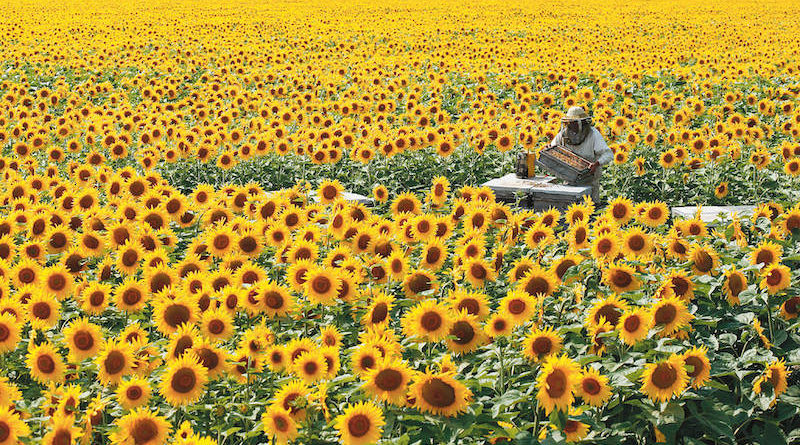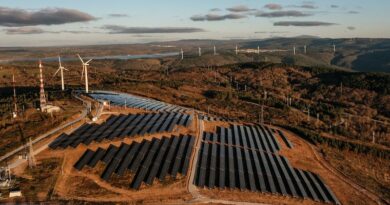
Ensuring sustainable, safe, affordable and quality food in Europe
A lot of people believe that the food on our tables and shelves in the supermarket are a matter of fact and take them for granted. However, sometimes we forget that tables and shelves are not filled magically. It is farmers who need to work for them. Farmers who get up in the morning to go to the fields or the stables to produce our dinner. Work that starts as early as the sunrise and sometimes goes on until way beyond midnight to bring the harvest home.
For a long time, full tables have been a normality. No one questioned the food security in Europe. With Covid-19, the question suddenly became omnipresent. Is our food chain resilient enough to ensure sustainable, safe, affordable and good food in Europe? Luckily, we can say now that our European food system has proven itself excellently. As a second benefit, the crisis has finally created a momentum to acknowledge the daily work of all actors in the food chain, especially for the farmers.
The new Farm to Fork Strategy aims to make the European food chain more sustainable and share the burden equally among all actors – from the Farmers over the processors and retail to the consumers.
In my opinion, the Farm to Fork strategy has some good ideas, but in itself is not the solution as it currently stands.
Even in crisis, the EU must be able to safely feed its people with nutritious and affordable food. Next to the question of quantity, we should also talk about the quality of the products we want to have. Not only will the yields decrease, there is also the question of health concerns without enough fungicides for example. Therefore, before any targets are legally binding or the Commission sends out letters to Member States urging them to implement the Farm to Fork Strategy, a proper impact assessment on food security, quality and income stability must be conducted.
For me three aspects will be crucial to find sustainable, efficient and climate-adapted solutions for a long-term food security.
First: Involving all actors
The strategy can be a success if all actors have the feeling to be included and their input and work is valued. Let me give you an example: In my region Baden-Württemberg, a citizen initiative threatened to divide farmers (including organic farmers) and NGOs focussing on nature on how to best protect bees. While everyone expected it to end badly, it proved the opposite. Both sides found a compromise which was on the one hand acceptable for the
NGOs, but also, and more importantly, had the support of the farming community. Rather than obligations and fix targets, the regional strategy now has ambitious target corridors and puts incentives before obligations.
This example shows what the Farm to Fork Strategy needs: first, cooperation and acceptance and second, recognising that there is rarely a single correct solution to any problem. Whereas I like the idea of the strategy, unfortunately the current text focuses too much on the “Farm” part, rather than the whole chain.
Second: Enabling the farming sector to adapt to the future and market-driven solutions
Instead of flooding the sector with additional requirements, let us help farmers make the necessary investments and changes for the future. This can be done by promoting investment and innovation, reducing bureaucracy and having the courage to adopt new (breeding) technologies. Furthermore, all measures should be market-driven. This increases the acceptance of all actors, responds to the needs and demands of consumers, allows flexibility in extreme situations (climate changes, crises) and is no less ambitious. These market-driven solutions should above all come into play in the discussion about pesticides, fertilizers and organic farming.
Third: Consumer awareness for quality and sustainability
Quality and sustainability have their price. I support that food prices should reflect transport and production costs fairly. This is why I want fair trade practices and strict measures against food counterfeiting and fair payment for those involved in the food chain. More regional production and consumption, circular economy, more animal welfare and ecological requirements don’t come without a price.
We need to make consumers aware about the quality and price of their food. With their purchasing behaviour, consumers decide which agricultural model they want to promote.
Therefore, they need to be well informed in order to make informed choices about their diet. This education contributes to a healthy diet, less food waste and fewer diet-related diseases. We as policy makers need to think of labelling schemes that make sense. We will have to do a better job labelling our products so that consumers know whether they originate from the EU and where and when they have been produced. The question here of course is how “local” we want to go and how to avoid threatening the internal market by promoting national products over products originating from other EU countries. However, such labels must not restrict the possibilities of manufacturers and processors in terms of their entrepreneurial freedom and the internal market.
To conclude: ensuring sustainable, safe, affordable and quality food in Europe does not need magic. As European policy makers, we need to enable all actors of the chain to make our food sector more sustainable and resilient.




